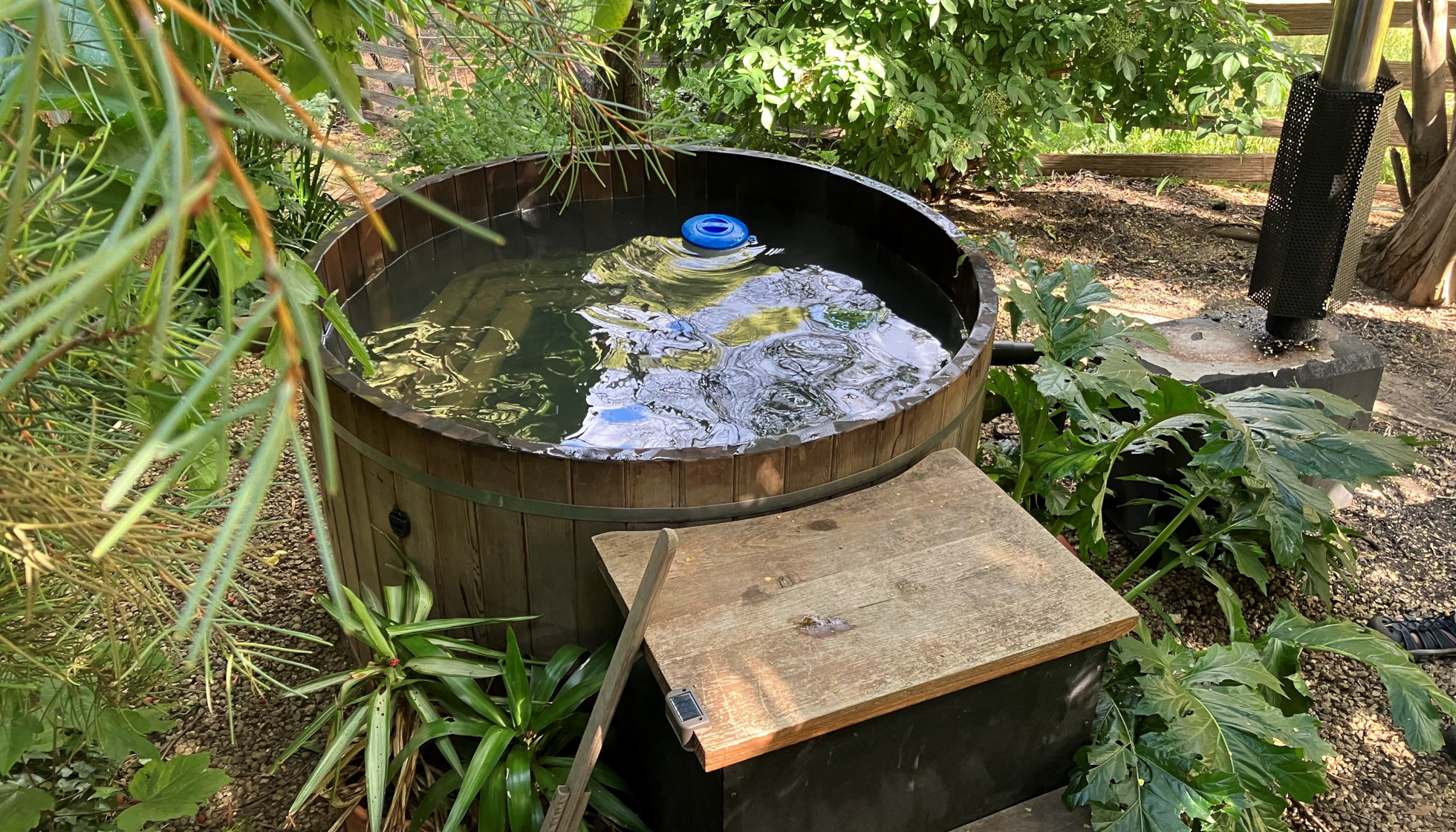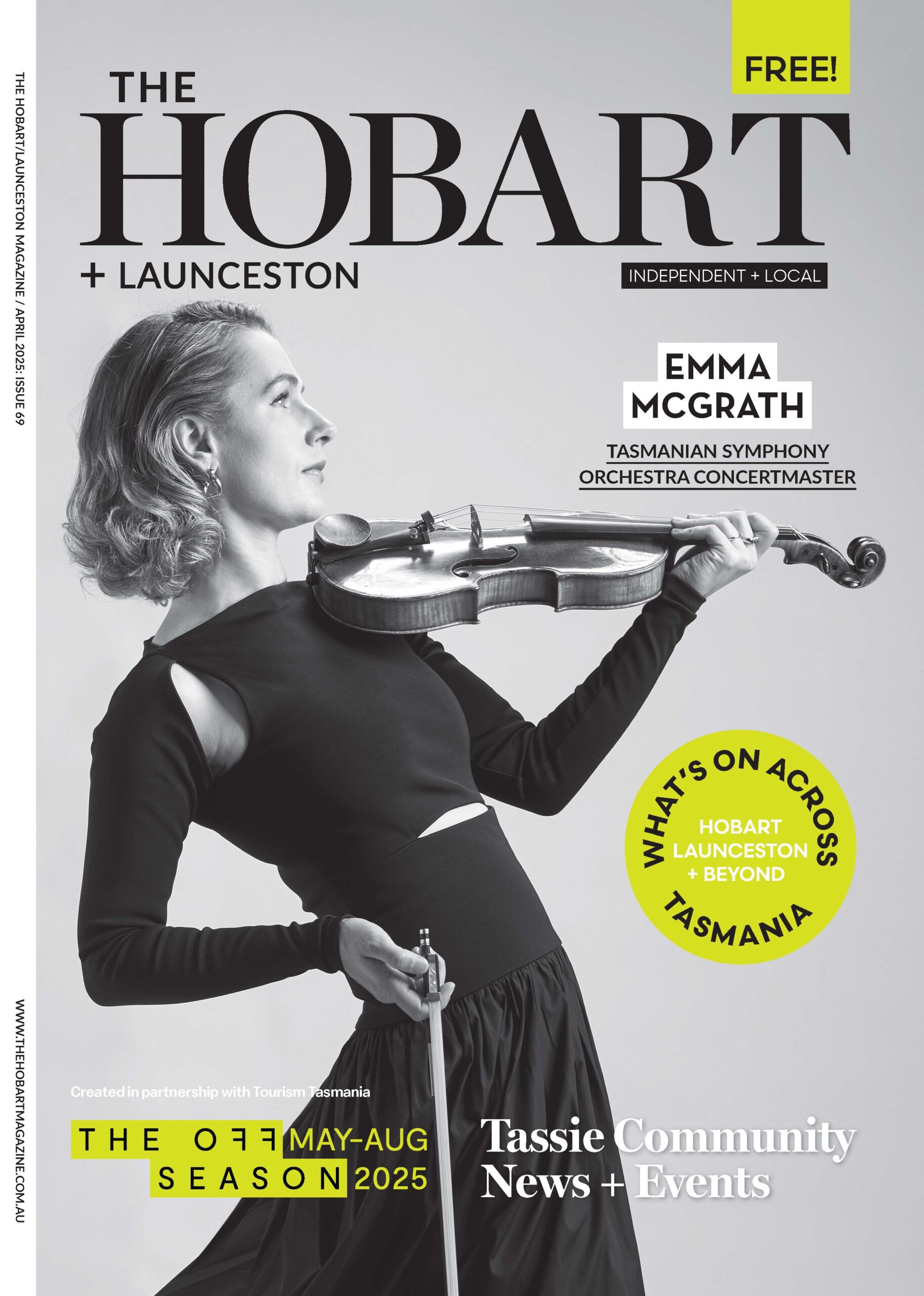Twamley Farm
by Amanda Double

Fancy getting away from it all for a night in the country? The historic Twamley Farm is about 46 km from Hobart, on the Tea Tree Rivulet just outside of Buckland. Here you can step back in time to stay in one of several delightful and comfortably renovated historic buildings.
Twamley Farm is a 7,000 acre working farm – having expanded from the original 2,500 acres granted to free settler Francis Smith back in 1829. His son was Sir Francis Villeneuve Smith, later fourth Premier of Tasmania, and the property was originally named “Villeneuve”. It was bought by Charles Meredith in 1852 and renamed “Twamley” after the maiden name of his wife (and cousin) Louisa Anne Meredith.

Louisa (1812-1895) was an accomplished writer, naturalist and artist who that same year had her memoir My Home in Tasmania published in London. It provides fascinating commentary on her first nine years of Iiving in Tasmania (before the move to Twamley), following the family’s departure from New South Wales in 1840. It’s a lively and entertaining account of what colonial life was like for a gentlewoman trying to make a home for her family in a succession of Tasmanian settlements, from Spring Vale near her husband’s family property, to Port Sorell and Orford. She colourfully documents the privations of bush living, often with an absent husband, the difficulties in retaining servants, and the long periods away from the social and intellectual stimulations of Hobart, while also lamenting “the frightful amount of snobbishness which prevails here among those who might really well dispense with the feverish terror of being said or thought to do anything ‘ungenteel’ or ‘unfashionable …” She also provides beautiful descriptions of the local flora and fauna, and her wildflower drawings were to win high praise. Later in life, when widowed, she was awarded a civil list pension by the Tasmanian government for ‘distinguished literary and artistic services’ to the colony (believed to be an Australian first).

I particularly enjoy Louisa’s account of what she called the bush art of ‘sticker-up’ cookery: “The orthodox material here is of course kangaroo, a piece of which is divided nicely into cutlets two or three inches broad and a third of an inch thick. The next requisite is a straight clean stick, about four feet long, sharpened at both ends. On the narrow part of this, for the space of a foot or more, the cutlets are spitted at intervals, and on the end is placed a piece of delicately rosy fat bacon. The strong end of the stick-spit is now stuck fast and erect in the ground, close by the fire, to leeward; care being taken that it does not burn. Then the bacon on the summit of the spit, speedily softening in the genial blaze, drops a lubricating shower of rich and savoury tears on the leaner cutlets below, which forthwith frizzle and steam and sputter with as much ado as if they were illustrious Christmas beef grilling in some London chop-house under the gratified nose of the expectant consumer.”
Before too long, the Merediths moved on again. And it is the Turvey family which has lived at Twamley Farm since 1874. John West Turvey was transported from England to Van Diemen’s Land in 1823 for sheep stealing, but was granted a ticket of leave in 1833 before settling in Buckland. The Turveys have been sheep farmers and wool growers ever since.
Five members of the Turvey family currently work at the Farm, including sisters Angela and Elizabeth who manage the accommodation offerings: The Stable, The Storekeeper’s, the Shearers’ Hut, and the more modern Farm Pod. We choose to stay in The Stable – converted from the original stable built around 1847 from rough local sandstone and blue gum timber beams, with four horse stalls as well as grain and timber storage above. The upper level is now a charming bedroom, complete with a bath – although my tall partner and I have to keep reminding ourselves to duck our heads when passing beneath the overhead beams.

There is a lounge and fully-equipped kitchen below, with breakfast ingredients (cereal, eggs, sourdough bread and condiments) supplied. For other meals, Buckland has a Roadhouse selling basics, Orford and Triabunna eateries are not too far away, and The Stable’s freezer is also stocked with home-made meals such as lasagne and local gourmet pizzas (available at extra cost). Or you can bring your own food. Having consumed an enormous lunch before arriving, we are happy to make do with snacks for dinner. After first taking full advantage of what is definitely a highlight for me: an outdoor wood-fired hot tub, which has been made ready for our arrival (you need to request this beforehand as it takes approximately five to eight hours to heat up).
While I luxuriate for a VERY long time in the delicious hot tub, all cares forgotten, my partner lights the pre-stacked outdoor fire pot, and it’s here by the cosy, flickering fire under the stars that we spend the rest of the evening before bed, contentedly chatting. And sometimes just listening – to the soothing sounds of the Tasmanian bush. I think of Louisa and others here long before us, including the Tasmanian Aboriginal traditional owners of this land, and pay silent tribute.

